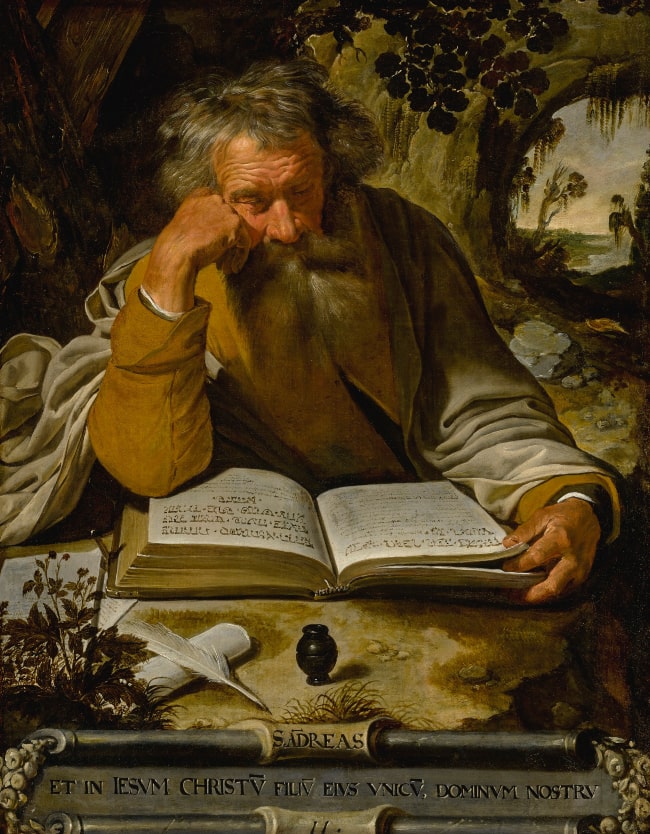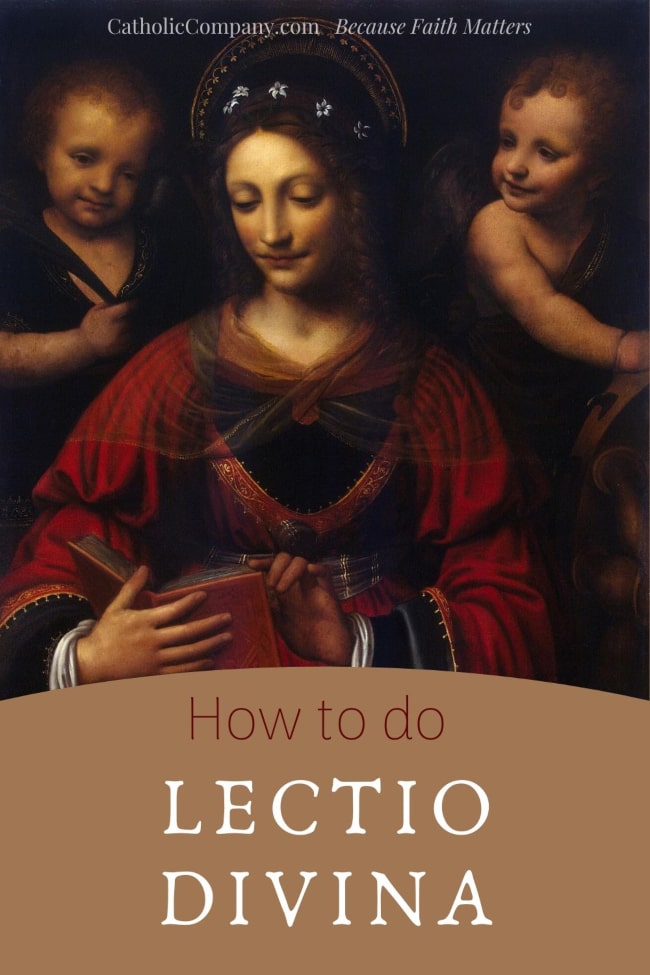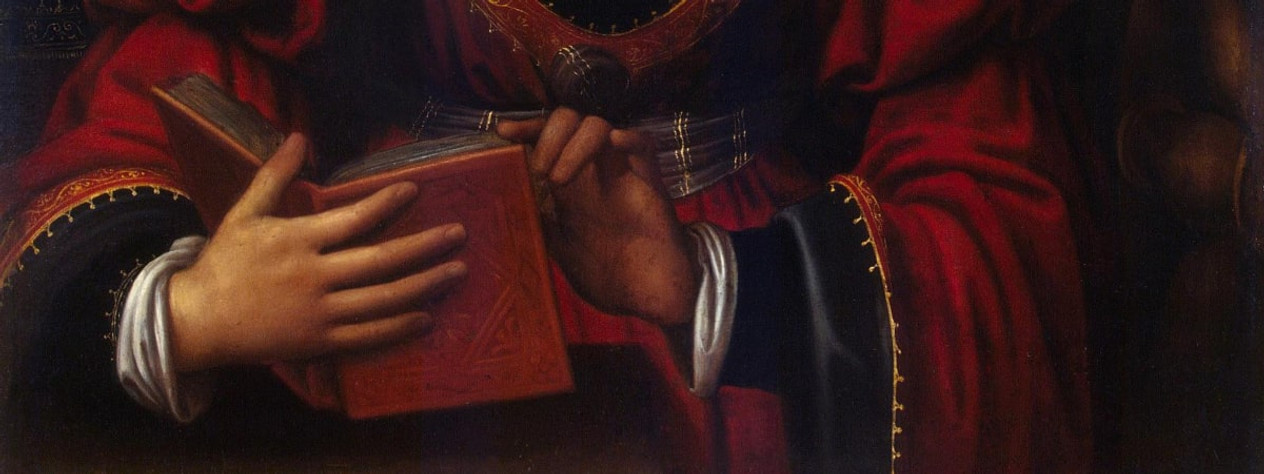How To Do Lectio Divina (Praying With Sacred Scripture)
Apr 09, 2020 by Whitney Hetzel
Prayer is a necessity for living an authentic Christian life. In fact, prayer is not only essential—it is also our primary means of communicating with God. Of all the Church’s treasures, there is nothing more rich and varied than its prayer, both communally and in the individual lives of its members.
Our greatest teacher is Jesus Christ, and He is the One to whom we must go to learn how to pray. The disciples knew this: "[Jesus] was praying in a certain place, and when he ceased, one of his disciples said to him, 'Lord, teach us to pray...'" (Luke 11:1). The Gospels reveal to us the intimate conversation between Jesus and the Father and we learn how to pray by imitating the profound communion between them.

Sacred tradition teaches us that the prayer of a committed and persevering Christian ascends to higher levels in three main stages. In the Western Catholic tradition, these three stages are called vocal prayer, mental prayer, and contemplative prayer. In the Eastern Catholic tradition, these stages are called bodily prayer, prayer of the mind, and prayer of the heart.
As prayer moves through these three stages it becomes more simple, perfect, and intimate, deepening from recited words to ineffable affections of the heart.
—School of Prayer
Vocal prayer consists of words recited aloud or silently. Mental prayer, also known as meditation, is silent prayer offered without words—in it, our minds transcend human language to meditate on the eternal truths behind the words of various prayers. Finally the third stage of prayer, contemplation, is that “prayer of the heart” in which “words and thoughts diminish as we enter into a loving, contemplative gaze of the Holy Trinity who dwells within us.”
Keep in mind that there is not "one right way" to pray. Each of us has a unique relationship with God, and prayer is the way we relate to Him. Each person prays uniquely. Still, there are universal aspects to prayer.
Ultimately, prayer is a gift. Without the grace of the Holy Spirit, we could not even begin to pray. And when we pray consistently, we begin to learn that we do not always pray in the way we should, or for the right things, which is why we need God's help: "Likewise the Spirit helps us in our weakness; for we do not know how to pray as we ought, but the Spirit himself intercedes for us with sighs too deep for words" (Romans 8:26).
In the consoling words of Pope Benedict XVI, we see how Our Lord gives us the gift of prayer:
In prayer we experience, more so than in other dimensions of life, our weakness, our poverty, our creatureliness, because we stand before the omnipotence and the transcendence of God. And the more we progress in listening and in dialogue with God, for prayer becomes the daily breath of our soul, the more we perceive the meaning of our limits, not just before the concrete situations of every day, but in our relationship with the Lord, too.
—A School of Prayer: The Saints Show Us How to Pray, p. 206
The Church encourages various wonderful ways in which to pray. One very special method was first introduced by the Church Fathers. This holy reading, meditating, and praying with scripture is called lectio divina, or “divine reading.”
[[8131,18056]]
What is Lectio Divina?

Pope Benedict XVI referred to the ancient tradition of lectio divina as a “prayerful listening to the Word of God.”
It is from this prayerful reading of Sacred Scripture, especially, that the Church has developed and taught its holy doctrines through the millennia. If we consider the ultimate prayer of the Church—the Holy Mass, which is the source and summit of our life in Christ—we can more easily understand how the reading of Scripture and the sacraments are fused in the prayerful liturgy.
The liturgy of the Word and liturgy of the Eucharist together form "one single act of worship"; the Eucharistic table set for us is the table both of the Word of God and of the Body of the Lord.
—Catechism of the Catholic Church, 1346
We can see how the prayerful reading of Sacred Scripture has always fueled the spiritual life of the Church. This is the basis of lectio divina.
Lectio divina is a great river that carries all the riches accumulated over the course of Church history by the fervent readers of God’s Word. Lectio divina is never solely our own reading. It feeds on the interpretation of those who have preceded us…if we persevere in lectio divina and silent listening to what the Spirit is saying to the Churches, our effort will be rewarded by unheard-of jewels and riches.
—Cardinal Robert Sarah
In the 12th century, a holy Carthusian monk named Dom Guigo II gave specific structure to lectio divina in his famous work Scala Claustralium (The Ladder of Monks).
In “The Ladder of Four Rungs,” he formulated a four-fold approach to praying with Holy Scripture: reading, meditation, prayer, and contemplation. We use this common method of lectio divina right up to the present day.
What use to spend your time in reading or listening to the deeds of the Holy Fathers, unless we bite and chew on them through meditation, and draw out somewhat and swallow it and send it to the heart, so that we may find, and by this understand, our own defaults, and after such knowing that we set ourselves to work that we may attain those virtues that were in them? If you will have your meditation richly rewarded you must pray with devotion, through which you may win to the sweetness of contemplation. Through this then you may understand that reading without meditation is idle, meditation without prayer is without effect, but prayer with devotion wins contemplation. …Thus should we climb by this ladder from degree to degree, from stair to stair, and from virtue to virtue, until we see the God of gods in Sion, that is, in the bliss of heaven.
—Scala Claustralium, The Ladder of Monks by Dom Guigo II
How to Pray with Sacred Scripture

The USCCB has provided a helpful summary on how to pray with Scripture using this four-step method of lectio divina, which we will quote here:
1. Read
The first element of this type of prayer is reading (lectio): you take a short passage from the Bible, preferably a Gospel passage and read it carefully, perhaps three or more times. Let it really soak-in.
2. Meditate
The second element is meditation (meditatio). By using your imagination enter into the Biblical scene in order to "see" the setting, the people, and the unfolding action. It is through this meditation that you encounter the text and discover its meaning for your life.
3. Pray
The next element is prayer (oratio) or your personal response to the text: asking for graces, offering praise or thanksgiving, seeking healing or forgiveness. In this prayerful engagement with the text, you open yourself up to the possibility of contemplation.
4. Contemplate
Contemplation (contemplatio) is a gaze turned toward Christ and the things of God. By God's action of grace, you may be raised above meditation to a state of seeing or experiencing the text as mystery and reality. In contemplation, you come into an experiential contact with the One behind and beyond the text.
The Fruit of Praying with Scripture
King David said to the Lord, “I treasure your word in my heart, so that I may not sin against you” (Psalm 119:11).
As Christians, we must also treasure the Word of God in our hearts. In order to live in a way that is pleasing to Our Lord, and to gain the graces He wants to give us through meditating on His Eternal Word, which formed our very being, St. Paul admonished us to, “Let the word of Christ dwell in you richly” (Colossians 3:16).
Holy Scripture is the Word of God addressed to every human being. Therefore, it is relevant in every time and every place.
—Catechism of the Ukrainian Catholic Church
We can expect to glean much spiritual fruit through the practice of praying with scripture, as Cardinal Robert Sarah encourages: “Through Sacred Scripture, when it is listened to and meditated upon in silence, divine graces are poured out on man.”
Most of the information in this article comes from the Good Catholic series School of Prayer. In addition to information on lectio divina, School of Prayer contains so much more information, such as: the two things necessary for true prayer; the four different kinds of prayer; the three levels of prayer; how to identify and overcome the common obstacles to prayer growth; practical tips for developing better habits of prayer; how to pray as a family…and more! Sign up for the series here.

[[4873,1687]]





